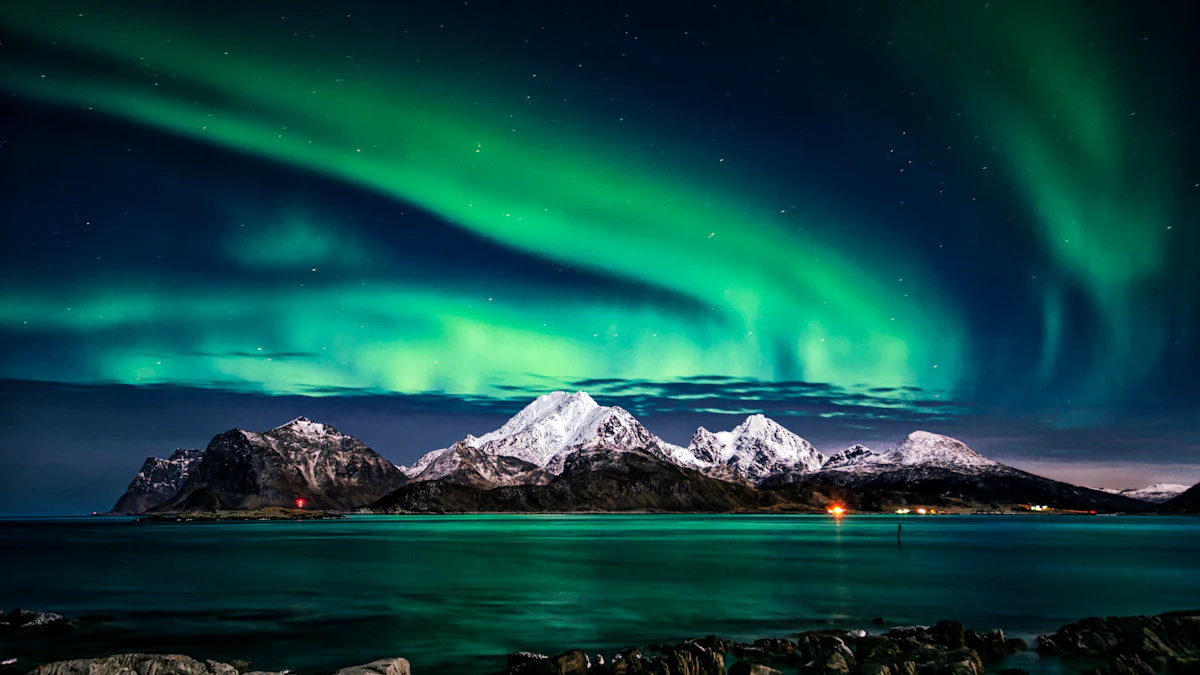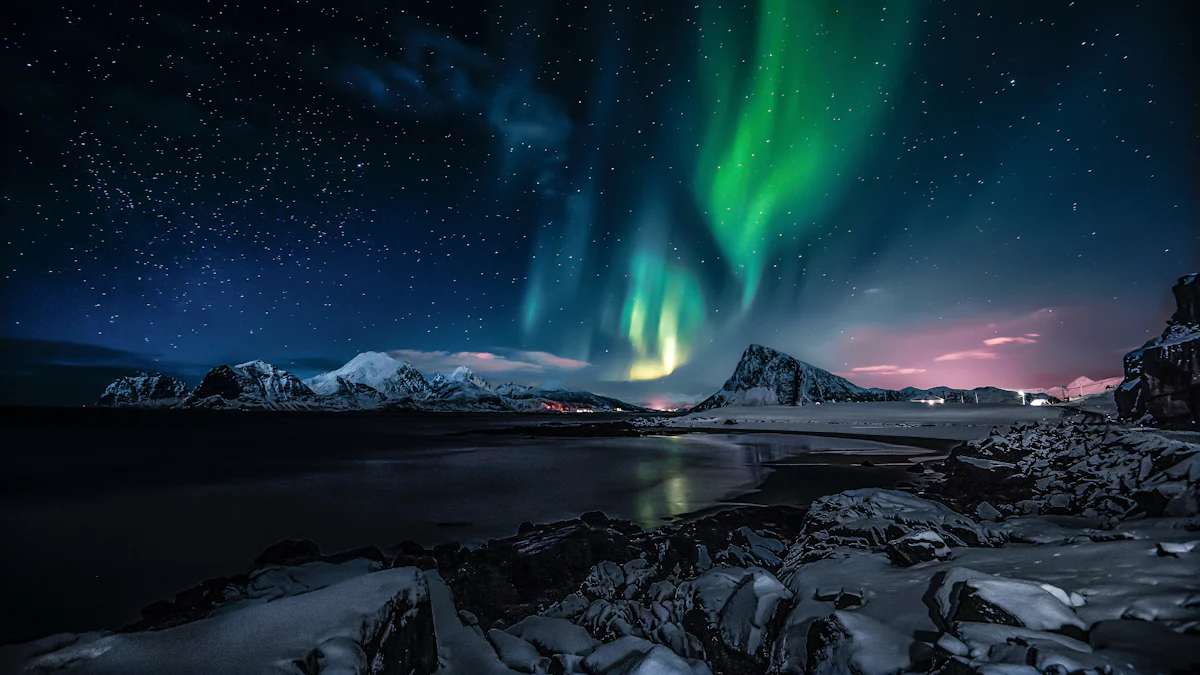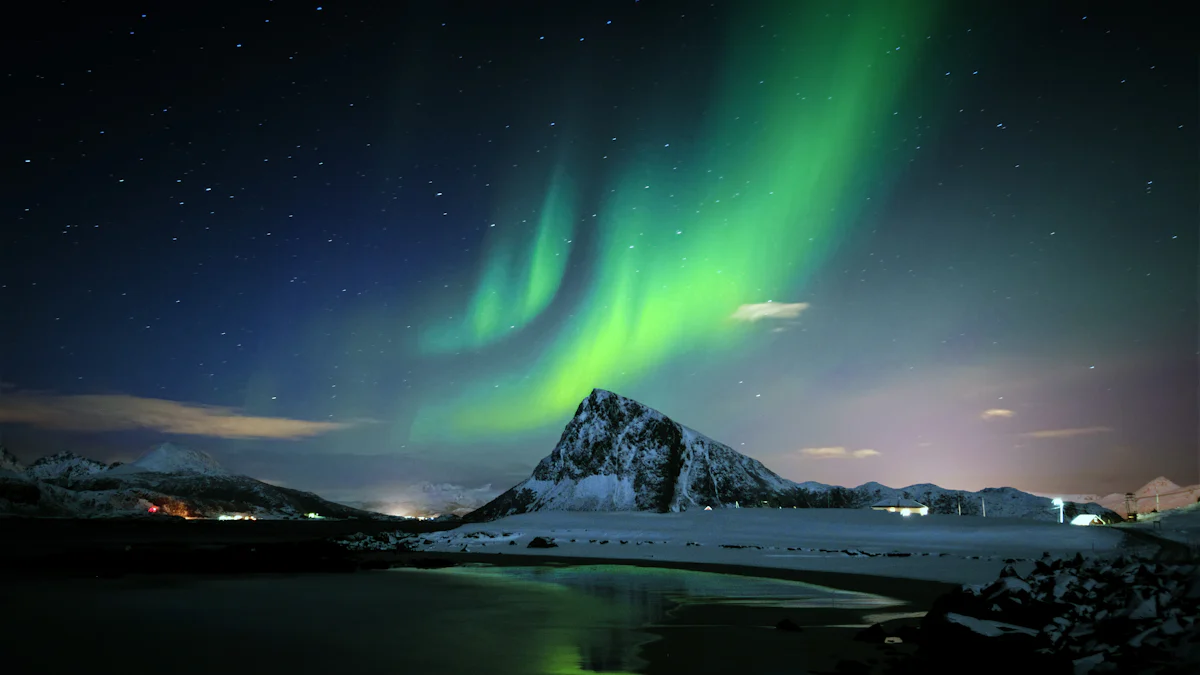
The Northern Lights, also known as the aurora borealis, captivate skywatchers with vibrant displays of green, pink, and purple lights. Forecasts play a crucial role in planning your viewing experience. Knowing when and where to look can make the difference between catching a glimpse of this natural wonder or missing it entirely. Tonight’s forecast promises an exciting opportunity to witness the Northern Lights in all their glory.
Understanding the Northern Lights

What Are the Northern Lights?
Scientific Explanation
The Northern Lights, or aurora borealis, occur when electrically charged particles from the Sun collide with Earth’s atmosphere. These particles travel along Earth’s magnetic field lines and create stunning light displays. Scientists explain that disturbances on the Sun pull on Earth’s magnetic field, generating Alfvén waves. These waves launch electrons into the atmosphere, causing the aurora. Dr. Mason describes this phenomenon as a direct result of solar activity interacting with our planet.
Historical and Cultural Significance
Throughout history, the Northern Lights have fascinated and inspired many cultures. Ancient civilizations often viewed the aurora as a divine or supernatural event. For example, Norse mythology believed the lights were reflections from the armor of the Valkyries. Indigenous peoples in North America saw the lights as spirits dancing in the sky. Today, the Northern Lights continue to captivate people worldwide, blending scientific understanding with a sense of wonder.
Factors Affecting Visibility
Geographical Location
Your location plays a significant role in viewing the Northern Lights. The best places to see the aurora are near the polar regions. Countries like Norway, Sweden, Finland, Canada, and Alaska offer prime viewing spots. The closer you are to the magnetic poles, the better your chances of witnessing the lights.
Weather Conditions
Clear skies are essential for seeing the Northern Lights. Cloud cover can obstruct your view, so check the weather forecast before heading out. Cold, crisp nights often provide the best conditions. Avoid areas with heavy light pollution. City lights can diminish the visibility of the aurora.
Solar Activity
Solar activity drives the intensity and frequency of the Northern Lights. The Sun goes through an 11-year cycle of solar activity, known as the solar cycle. During periods of high solar activity, geomagnetic storms become more frequent. These storms enhance the chances of seeing the aurora. Scientists use tools like the Kp index to measure geomagnetic activity. A higher Kp index indicates a stronger likelihood of visible Northern Lights.
Tonight’s Northern Lights Forecast
Best Locations to View the Northern Lights
Top Spots in North America
Head to Canada for a prime viewing experience. Calgary and the Minnesota-Canada border offer excellent opportunities. Alaska also provides stunning views, especially around Fairbanks. In the continental U.S., consider visiting Wisconsin, Minnesota, or Michigan. These states have favorable conditions tonight.
Top Spots in Europe
Europe boasts several top spots for aurora viewing. Norway, particularly Tromsø, is a favorite. Sweden and Finland also offer great locations. For those in the UK, northern areas like Scotland provide good chances. Southern Scandinavia often sees vibrant displays.
Top Spots in Other Regions
New Zealand’s southern regions are ideal for aurora sightings. The dark skies there enhance visibility. Iceland remains a popular destination, with frequent aurora activity. Tasmania in Australia offers another excellent spot for viewing.
Optimal Viewing Times
Time Windows for Best Visibility
The best time to see the Northern Lights falls between 10 p.m. and 2 a.m. This window offers the highest activity. Clear skies overnight improve your chances. Avoid city lights to enhance visibility.
How to Use Forecast Tools
Use forecast tools to plan your viewing. Websites like the National Oceanic and Atmospheric Administration (NOAA) provide real-time updates. Check the Kp index for geomagnetic activity levels. A higher Kp index means better visibility. Apps like My Aurora Forecast offer user-friendly interfaces. These tools help pinpoint the best times and locations.
Real-Time Updates
Websites and Apps for Live Tracking
Several websites offer live tracking of the Northern Lights. NOAA’s Space Weather Prediction Center provides detailed forecasts. The Aurora Dashboard gives short-term predictions. Apps like Aurora Alerts and My Aurora Forecast offer real-time notifications. These resources keep you updated on changing conditions.
Social Media Channels to Follow
Follow social media channels for live updates. Twitter accounts like @Aurora_Alerts and @AuroraNotify offer timely information. Facebook groups dedicated to aurora sightings share real-time reports. Engaging with these communities enhances your chances of catching the lights.
Tips for a Successful Viewing Experience

Preparing for the Cold
Essential Clothing and Gear
Staying warm is crucial when viewing the Northern Lights. Wear layers to trap heat. Start with a thermal base layer. Add an insulating layer like fleece. Finish with a waterproof outer layer. Don’t forget a hat, gloves, and a scarf. Insulated boots keep your feet warm. Bring a blanket or sleeping bag for extra warmth.
Safety Tips
Safety should be a priority. Inform someone about your plans. Carry a fully charged phone. Pack a first aid kit. Bring snacks and water. Use a headlamp to navigate in the dark. Avoid alcohol, which can lower body temperature. Stay aware of your surroundings. Watch for wildlife.
Photography Tips
Best Camera Settings
Capturing the Northern Lights requires the right settings. Use a DSLR or mirrorless camera. Set the ISO between 800 and 3200. Use a wide-angle lens with a low f-stop. Set the aperture to f/2.8 or lower. Adjust the shutter speed between 5 and 25 seconds. Focus manually to infinity. Use a tripod to keep the camera steady.
Recommended Equipment
Bring essential gear for the best photos. A sturdy tripod prevents blurry images. Extra batteries are crucial in cold weather. Use a remote shutter release to avoid camera shake. A lens hood reduces glare from nearby lights. Consider a red flashlight to adjust settings without ruining night vision.
Enhancing the Experience
Bringing Friends and Family
Sharing the experience makes it more memorable. Invite friends and family. Plan a group outing. Bring hot drinks and snacks. Share stories while waiting for the lights. Create lasting memories together.
Other Activities to Enjoy
Combine aurora viewing with other activities. Stargazing adds to the experience. Look for constellations and planets. Enjoy a campfire if conditions allow. Roast marshmallows and make s’mores. Bring a telescope for a closer look at the night sky.
Forecasts play a crucial role in planning your Northern Lights adventure. Use the tips and tools provided to maximize your chances of witnessing this celestial wonder. The magic of the Northern Lights connects you with the universe in a way that few experiences can. Embrace the moment, share it with loved ones, and let the awe-inspiring beauty of the aurora borealis create unforgettable memories.
 Press Coffee
Press Coffee